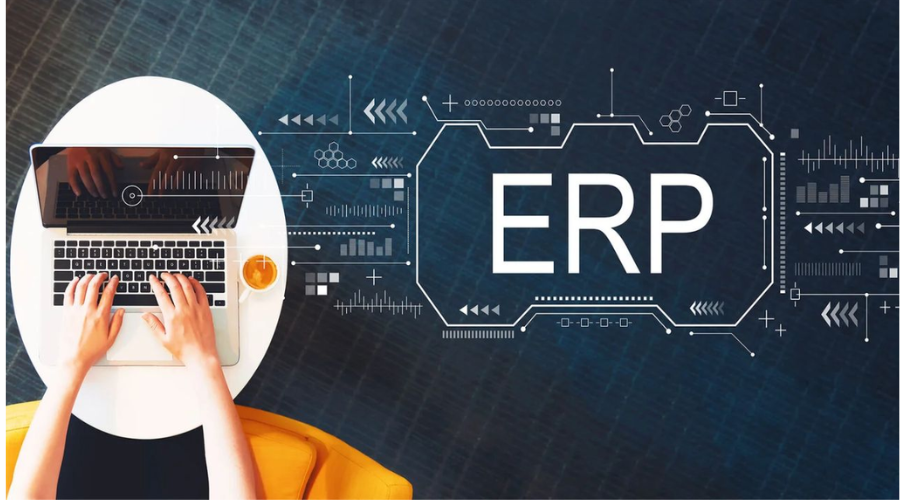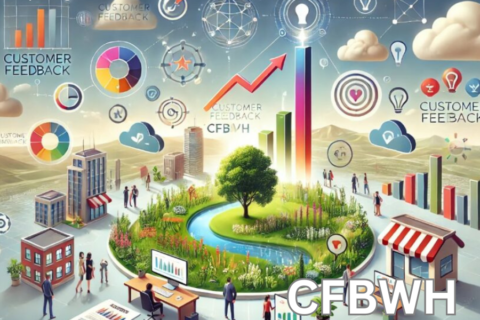Introduction: The Power of ERP in Modern Business
https://noticviralweb.blogspot.com/2024/04/consejos-erp-empresa.html have become indispensable tools for businesses of all sizes. They provide a centralized platform for managing core business functions such as finance, human resources, supply chain, and customer relationship management. By integrating these processes, ERP systems eliminate data silos, enhance collaboration, and improve overall efficiency. However, the success of an ERP implementation depends on various factors, including careful planning, employee training, and ongoing support.
Understanding ERP: What It Is and Why It Matters
1. What is ERP?
ERP stands for Enterprise Resource Planning. It is a type of software that organizations use to manage and integrate the essential parts of their businesses. An ERP software system can integrate planning, purchasing inventory, sales, marketing, finance, human resources, and more.
2. Benefits of https://noticviralweb.blogspot.com/2024/04/consejos-erp-empresa.html
Implementing an ERP system can provide numerous benefits, including:
- Improved Efficiency: By automating repetitive tasks and streamlining processes, ERP systems help reduce manual work and increase productivity.
- Enhanced Data Accuracy: Centralized data management minimizes errors and ensures that all departments access accurate and up-to-date information.
- Better Decision-Making: With real-time data analytics and reporting capabilities, ERP systems provide valuable insights that aid in strategic decision-making.
- Cost Savings: By improving operational efficiency and reducing errors, ERP systems can lead to significant cost savings over time.
- Scalability: ERP systems can grow with your business, allowing you to add new functionalities and modules as needed.
Key Tips for Successful ERP Implementation
1. Define Clear Objectives
Before implementing an ERP system, it’s crucial to define clear objectives and goals. Ask yourself what you hope to achieve with the ERP system. Common objectives include:
- Improving operational efficiency
- Enhancing data accuracy
- Streamlining reporting processes
- Facilitating better collaboration among departments
By establishing specific goals, you can align your ERP implementation strategy with your business needs.
2. Choose the Right ERP Solution
Selecting the right ERP solution is critical to your success. Consider the following factors when evaluating ERP systems:
- Industry Fit: Ensure that the ERP system is tailored to your industry’s specific needs and challenges.
- Scalability: Choose a solution that can grow with your business and accommodate future needs.
- User-Friendliness: Opt for an ERP system with an intuitive interface that employees can easily navigate.
- Customization Options: Look for a solution that allows for customization to meet your unique business requirements.
- Vendor Reputation: Research potential vendors and consider their reputation, customer support, and track record of successful implementations.
3. Involve Key Stakeholders
Involving key stakeholders from various departments during the ERP implementation process is essential. This includes:
- Management: Leadership should be actively involved in setting objectives and providing support.
- IT Team: The IT department plays a crucial role in the technical aspects of the implementation.
- End Users: Employees who will be using the ERP system daily should provide input on their needs and preferences.
By involving stakeholders, you can ensure that the ERP system meets the needs of all departments and fosters a sense of ownership among employees.
4. Invest in Training and Support
Employee training is a vital component of successful ERP implementation. Ensure that all users receive comprehensive training on how to use the system effectively. Consider the following training strategies:
- Hands-On Training: Provide practical, hands-on training sessions to familiarize employees with the system.
- Online Resources: Offer access to online tutorials, documentation, and user guides for ongoing reference.
- Support Channels: Establish support channels for employees to seek assistance when needed, such as help desks or dedicated support teams.
5. Monitor and Evaluate Performance
Once the https://noticviralweb.blogspot.com/2024/04/consejos-erp-empresa.html is implemented, it’s essential to monitor its performance and evaluate its effectiveness. Consider the following metrics:
- User Adoption Rates: Track how many employees are actively using the system and identify any barriers to adoption.
- Process Efficiency: Measure improvements in operational efficiency and productivity.
- Data Accuracy: Assess the accuracy of data entered into the system and identify any discrepancies.
- Return on Investment (ROI): Calculate the ROI of the ERP system by comparing the costs of implementation with the benefits gained.
Regularly reviewing these metrics will help you identify areas for improvement and make necessary adjustments to optimize the system.
Common Challenges in ERP Implementation
1. Resistance to Change
One of the most significant challenges in ERP implementation is resistance to change from employees. Many individuals may be accustomed to existing processes and may be hesitant to adopt a new system. To address this challenge:
- Communicate Benefits: Clearly communicate the benefits of the ERP system to employees, emphasizing how it will improve their work processes.
- Involve Employees Early: Engage employees in the implementation process from the beginning to foster a sense of ownership and buy-in.
2. Data Migration Issues
Transferring data from legacy systems to the new ERP system can be complex and time-consuming. To ensure a smooth data migration process:
- Conduct Data Audits: Review existing data for accuracy and relevance before migration.
- Plan for Data Cleansing: Identify and correct any data discrepancies before transferring it to the new system.
3. Underestimating Time and Resources
Implementing an ERP system often takes longer and requires more resources than initially anticipated. To avoid underestimating the project:
- Create a Realistic Timeline: Develop a detailed project timeline that accounts for all phases of implementation, including planning, testing, and training.
- Allocate Sufficient Resources: Ensure that you have the necessary resources, including personnel and budget, to support the implementation process.
The Future of https://noticviralweb.blogspot.com/2024/04/consejos-erp-empresa.html
As technology continues to evolve, so too do ERP systems. Here are some trends shaping the future of ERP:
1. Cloud-Based Solutions
Cloud-based ERP solutions are becoming increasingly popular due to their scalability, flexibility, and cost-effectiveness. Businesses can access their ERP systems from anywhere, making remote work and collaboration easier.
2. Artificial Intelligence and Automation
Integrating artificial intelligence (AI) and automation into ERP systems can enhance data analysis, improve decision-making, and streamline processes. AI-driven insights can help businesses identify trends and make informed strategic decisions.
3. Mobile Accessibility
With the rise of mobile technology, ERP systems are becoming more accessible on smartphones and tablets. This allows employees to access critical information and perform tasks on the go, improving efficiency and responsiveness.
4. Enhanced User Experience
User experience (UX) is a top priority for ERP vendors. Future ERP systems will focus on providing intuitive interfaces, personalized dashboards, and seamless navigation to enhance user satisfaction.
Conclusion: Embracing the ERP Journey
Implementing an https://noticviralweb.blogspot.com/2024/04/consejos-erp-empresa.html is a significant undertaking that can transform your business operations and drive growth. By following the tips outlined in this article, you can navigate the complexities of ERP implementation and maximize the benefits of your chosen solution. Remember that the journey doesn’t end with implementation; ongoing training, monitoring, and adaptation are essential for ensuring long-term success. As you embrace the power of ERP, you’ll unlock new opportunities for efficiency, collaboration, and innovation within your organization.
FAQs
What is ERP?
ERP stands for Enterprise Resource Planning, a type of software that integrates core business processes, including finance, HR, supply chain, and customer relationship management.
What are the benefits of implementing an ERP system?
Benefits include improved efficiency, enhanced data accuracy, better decision-making, cost savings, and scalability.
How can I ensure a successful ERP implementation?
Define clear objectives, choose the right ERP solution, involve key stakeholders, invest in training, and monitor performance.
What challenges might I face during ERP implementation?
Common challenges include resistance to change, data migration issues, and underestimating the time and resources required.
What trends are shaping the future of ERP systems?
Key trends include cloud-based solutions, artificial intelligence integration, mobile accessibility, and enhanced user experience.
By understanding the intricacies of ERP systems and following best practices, businesses can harness the full potential of these powerful tools to drive growth and success in an increasingly competitive landscape.







